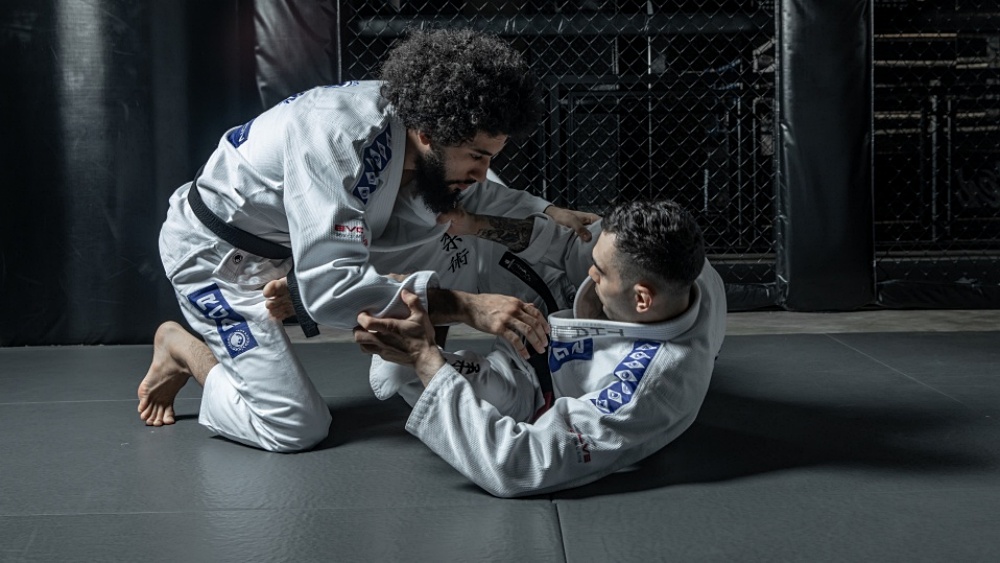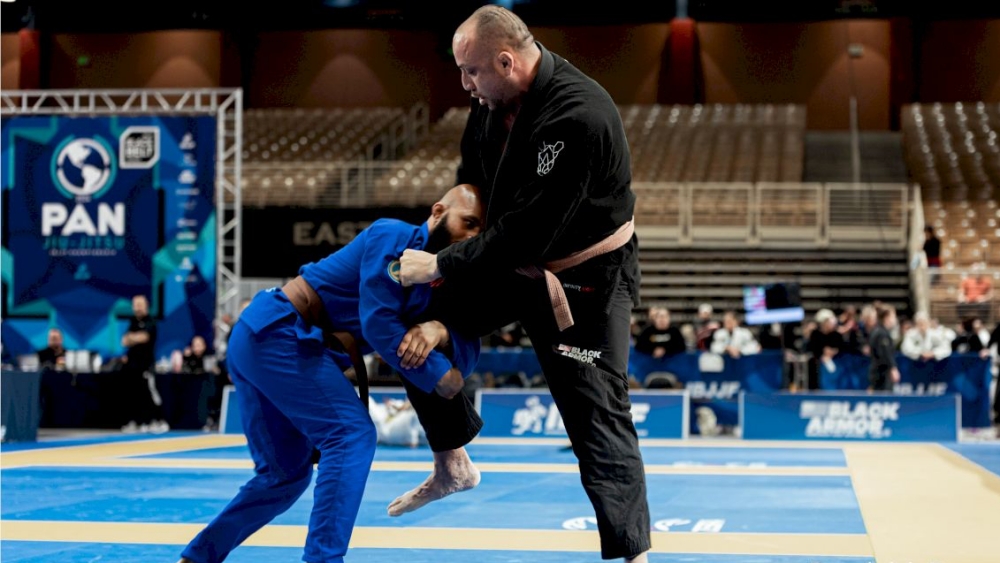Your isometric strength plays a role in martial arts like Brazilian Jiu-Jitsu, Wrestling, Boxing, and Muay Thai, whether you realize this or not. Anything that requires holding a position while fighting against tension and other forces uses isometric strength. This means that many martial arts techniques, such as applying top pressure on opponents while grappling, use isometric strength.
Isometric training builds strength in ways dynamic movements can’t. While dynamic exercises also help to build sports-specific strength, isometric training is equally important.
Why Fighters Should Care About Isometric Strength
Isometric training has many applications in fighting. Whether resisting a submission, holding a dominant position on the ground, or keeping an opponent trapped in a clinch, isometric strength keeps you in control.
Isometric training involves contracting your muscles without changing their length. Think of exercises like the plank or wall sits, which make your muscles burn like crazy without having to shorten and lengthen them as you do during dynamic exercises.
Some Of The Benefits Isometric Training Have For Fighters Include:
1) Unrelenting Grip Strength

Isometric holds build the core and grip strength needed for strong guard passing in BJJ.
Grip strength and endurance play a considerable role in martial arts like BJJ, where hand or sleeve control can be the difference between successfully executing a technique or ending up in a disadvantageous position. Grip strength also plays a role in striking-based martial arts like Muay Thai in clinched positions.
Exercises like towel hangs, farmer’s carries, and plate pinches are effective isometric exercises for increasing grip strength.
2) Improved Core Stability

A strong core helps in maintaining balance, generating power, and absorbing impact during both offense and defense.
A strong core does more than make you look good; it increases your ability to resist forces. Core stability is crucial for many aspects of fighting, such as scrambling for positions, absorbing strikes, and defending against takedowns. Isometric exercises like planks, hollow holds, and hanging leg raises are excellent ways to strengthen your core.
3) More Explosive Strikes

A strong core fuels the power behind your takedowns, keeps you balanced in scrambles, and helps you resist being taken down yourself.
Isometric training helps increase explosive power, despite how counterintuitive that might seem. Holding a position under tension builds muscle strength at specific angles, which can translate into more force behind strikes and takedowns. Boxing instructors often stress the importance of isometric training, which strengthens the stabilizer muscles needed for rapid, powerful movements.
4) Endurance For Long Rounds
Muscle endurance is just as important as muscle strength for fighters since fighting requires you to maintain your output for specified lengths of time, typically broken into rounds. Fatigue is the worst thing that can happen during a fight since it leaves you at your opponent’s mercy.
Isometric training helps improve muscle endurance by delaying fatigue. Exercises like entering a squat against a cage as you wall walk or trying to finish an arm triangle rely on sustained strength.
5) Bulletproofing Your Body

Think about longevity for your body—isometrics not only build strength but also help bulletproof you against potential strains and setbacks.
Isometric training strengthens the ligaments and tendons that hold your body together, reducing any potential strains and setbacks. Stronger corrective tissues mean your joints handle the stress put on them during training better, especially when performing intense physical activities. Isometric training also provides an alternate way to train your muscles if injuries have limited your mobility.
6) Improved Mind-Muscle Connection
Isometric training requires you to focus on engaging specific muscles, strengthening your mind-muscle connection. This heightened level of awareness leads to improved technique, balance, and coordination, key attributes for all fighters to develop.
7) Increased Resilience Under Pressure

As much as isometrics build physical strength, they also develop mental fortitude, forcing you to stay composed and push through discomfort.
Fighting is as mental as it is physical. It requires you to push through challenging situations as you try to carve a path to victory. Holding a difficult position similarly challenges your mental toughness. For example, how long you can hold a wall sit doesn’t depend only on how strong your legs are; your willingness to hold the position regardless of how much your legs burn also plays a role.
Isometric Training for BJJ, Wrestling, and Striking
Now that we’ve covered the basics of isometric training, let’s discuss how to make it a part of your training routine:

Isometric holds build the core and grip strength needed for strong guard passing in BJJ.
Some of the best isometric exercises to build sport-specific strength for BJJ include:
- Planks: Planks and variations of the exercise help to build core strength that translates into ground fighting.
- Wall Sits: This exercise engages muscles in your legs similarly to how they are engaged when you’re trying to keep an opponent in your guard.
- Grip Hangs: Here’s an excellent way to improve your grip strength for BJJ. It’ll considerably improve your ability to finish techniques like Ezekiel chokes.
- Isometric Pulls: Pulling against immovable objects like a sturdy pole engages your muscles similarly to how they’re engaged when you resist an opponent’s movement.
- Triangle Choke Holds: Strengthen your legs and hip flexors by locking triangle chokes for as long as possible on training dummies. This will improve your ability to squeeze for longer periods when trying to finish the choke on real opponents.

Wrestlers rely on isometric strength to maintain control during clinches and takedown battles.
Some isometric exercises wrestlers should consider adding to their training routines include:
- Bridge Holds: This exercise helps strengthen your neck and posterior chain, strengthening many of the muscles engaged when defending against takedowns.
- Static Squat Holds: This exercise helps strengthen the muscles in your legs, allowing you to maintain strong stances for longer.
- Farmer’s Carries: Farmer’s carries help with grip and core strength, improving your ability to control opponents in clinch positions.
- Neck Isometrics: These exercises strengthen your neck, helping you to absorb the impact of slams.
Striking Based Martial Arts

Strikers need static strength to maintain balance, deliver power, and absorb counters—build it with isometrics.
- Isometric Punch Holds: Throw a punch and hold the position to build endurance in your shoulders.
- Wall Pushes: Push on a wall to increase your ability to push opponents off you.
- Calf Raise Holds: This exercise helps to improve your balance and build muscle endurance in your lower leg.
- Trap Bar Deadlift Holds: This exercise strengthens muscles in your posterior chain, increasing the explosive energy in your strikes.
Give Isometric Training A Try
Isometric training strengthens your body in ways dynamic exercises can’t, increasing your abilities as a fighter. Swap some dynamic exercises for isometric ones and watch how much stronger you become.
You may also like:
Weight Training For Fighters: Balancing Strength, Endurance, And Speed













